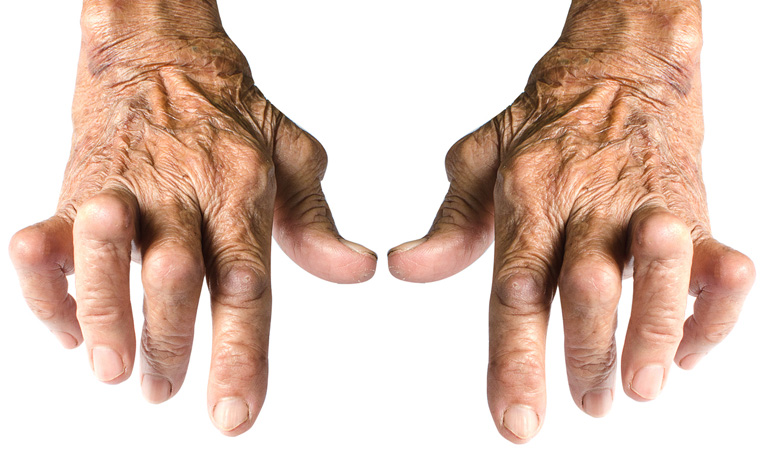
Rheumatoid arthritis (RA) may cause foot deformation.
Did you know that your feet carry up to 120 per cent of your body weight with each step?
That’s the equivalent of carrying a blue whale for every mile walked. However, in people with rheumatoid arthritis (RA), the forces acting on each foot, combined with the joint destruction caused by the disease, can worsen foot pain and foot deformities.
Common foot issues experienced by patients with rheumatoid arthritis
1. I cannot find shoes that fit
Finding shoes that fit is one of the most common foot-related issues experienced by people with rheumatoid arthritis (RA). When purchasing footwear, they must take extra care to pick not only the right size but also the correct footwear shape.
The best way to check whether shoes fit properly is to remove the shoe insert and to stand on it (provided the shoe insert hasn’t been sewn in). If the sides of your foot bulge outwards and exceed the width of the insert, look for wider shoes. There should also be approximately one thumb’s width from the end of the shoe to the tip of your longest toe.
A shoe’s depth is also very important, especially around the toes. If the front of the shoe is too narrow or shallow, it will press your toes together. A correctly fitting shoe should be deep enough to accommodate your toes comfortably without forcing them together or pressing down on them (which can also cause corns on your toes).
If your feet have more severe deformities, you might need to go to specialty shoe shops or custom shoemakers to find shoes that fit your feet. Talk to a podiatrist; most podiatry clinics can tell you where the best shops are.
2. My feet hurt when I walk
There can be a variety of reasons why your feet hurt when you walk. For instance, your shoes may not fit correctly, the way you walk may subject certain parts of your foot to excessive stress or pressure or you may have skin problems like foot corns and calluses.
Even the underlying disease processes of rheumatoid arthritis (RA) can lead to changes causing pain. If you suffer from persistent foot pain, it is best to see a podiatrist for a foot assessment.
3. Will my feet become deformed?
A proportion of patients with rheumatoid arthritis (RA) can develop very severe foot deformities, such as bunions, hammer toes / clawed toes and flat feet. On a more positive note, some studies have shown that permanent foot deformities can be prevented in some people with the use of foot insoles (or orthoses) at the initial stages of the disease. If you are concerned that your feet have changed shape recently, do see a podiatrist for a foot assessment.
4. Now that my feet are deformed, what are my options?
Even with severe foot deformities, there are ways that foot pain can be alleviated. Corns and calluses can be removed by a qualified podiatrist. These tend to recur so regular appointments with your podiatrist may be necessary until the source of constant pressure on your foot is fully addressed with either a change to appropriate footwear or with orthoses.
There are also many soft, cushioning insoles that can redistribute the pressure under both feet. Toe pads (or digital orthoses) can also be used to relieve pressure points over toe deformities.
When the feet are severely deformed, surgery is sometimes the best long-term option. This can be successful but there are risks involved. If surgery is not possible, regular palliative podiatric care can assist in relieving foot pain and enable you to retain good mobility and to continue with your daily activities in relative comfort.
Ref: R14
Check out our other articles on rheumatoid arthritis (RA):
Rheumatoid Arthritis (RA): Causes, Symptoms and Treatment
Rheumatoid Arthritis (RA): Other Complications That May Occur
Contributed by

















 Get it on Google Play
Get it on Google Play